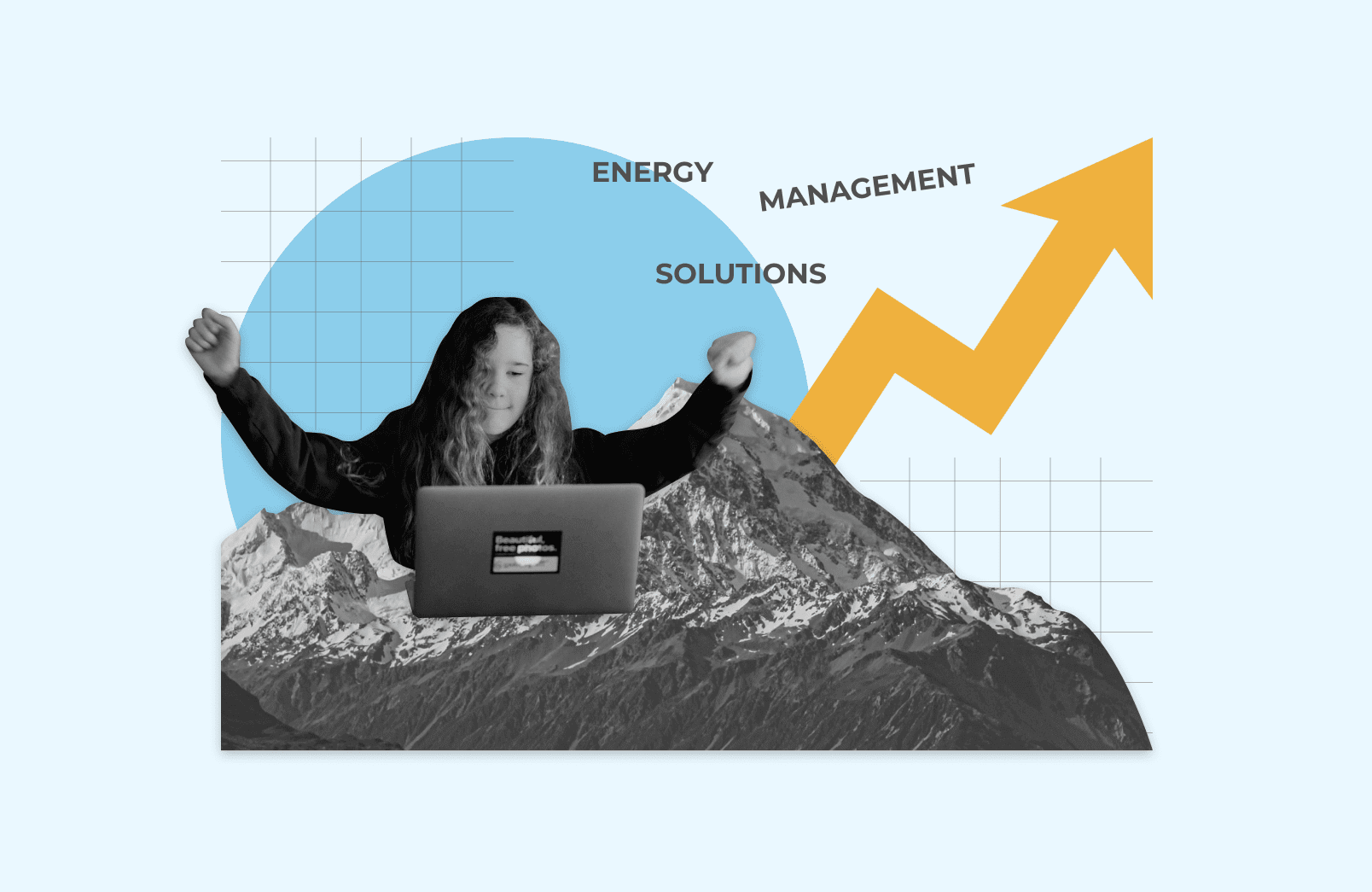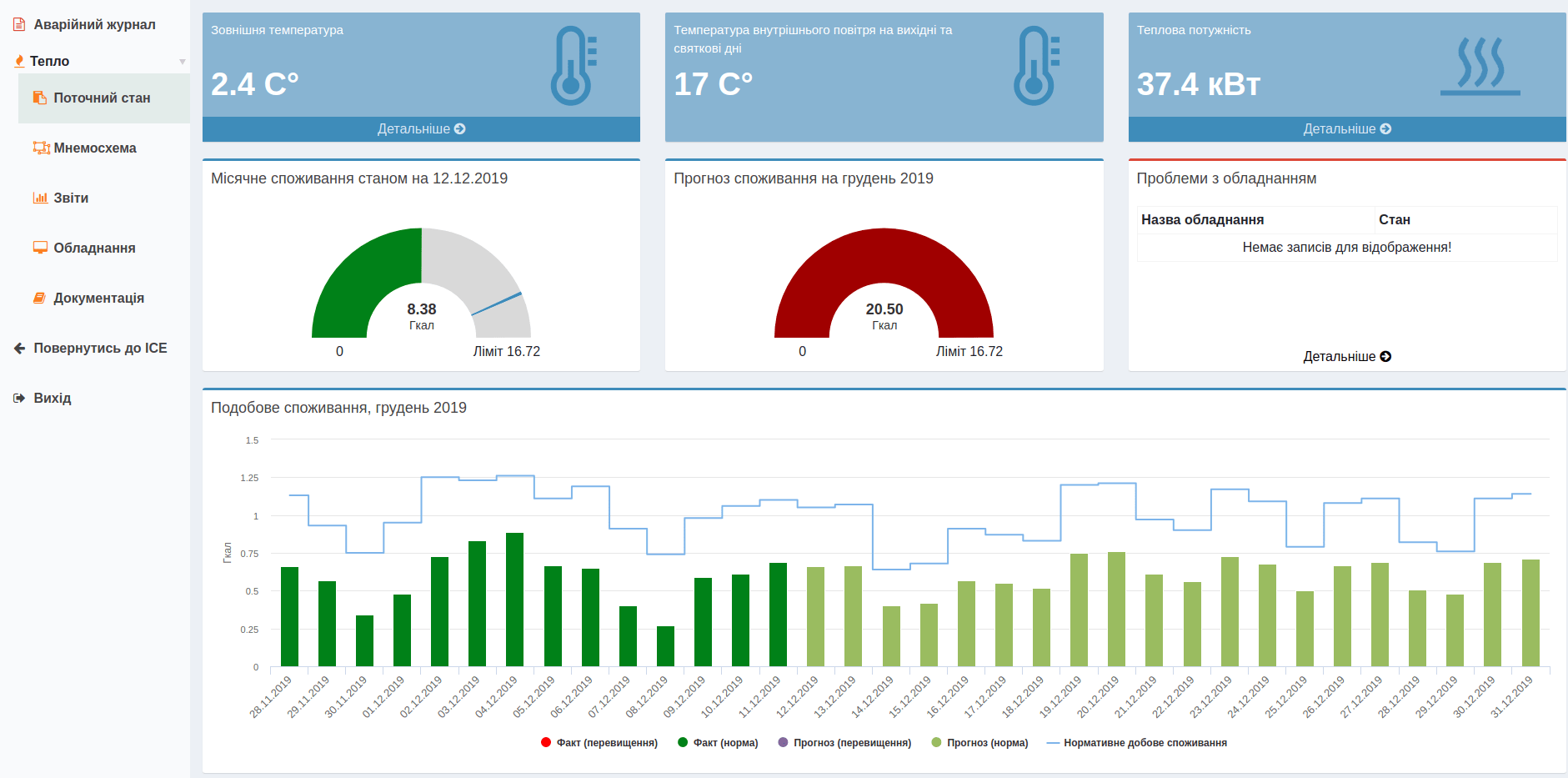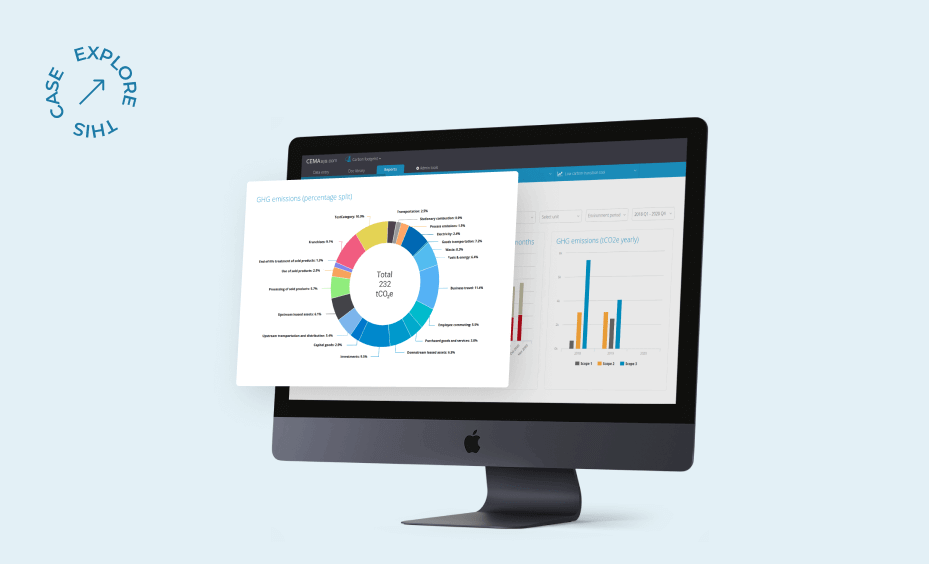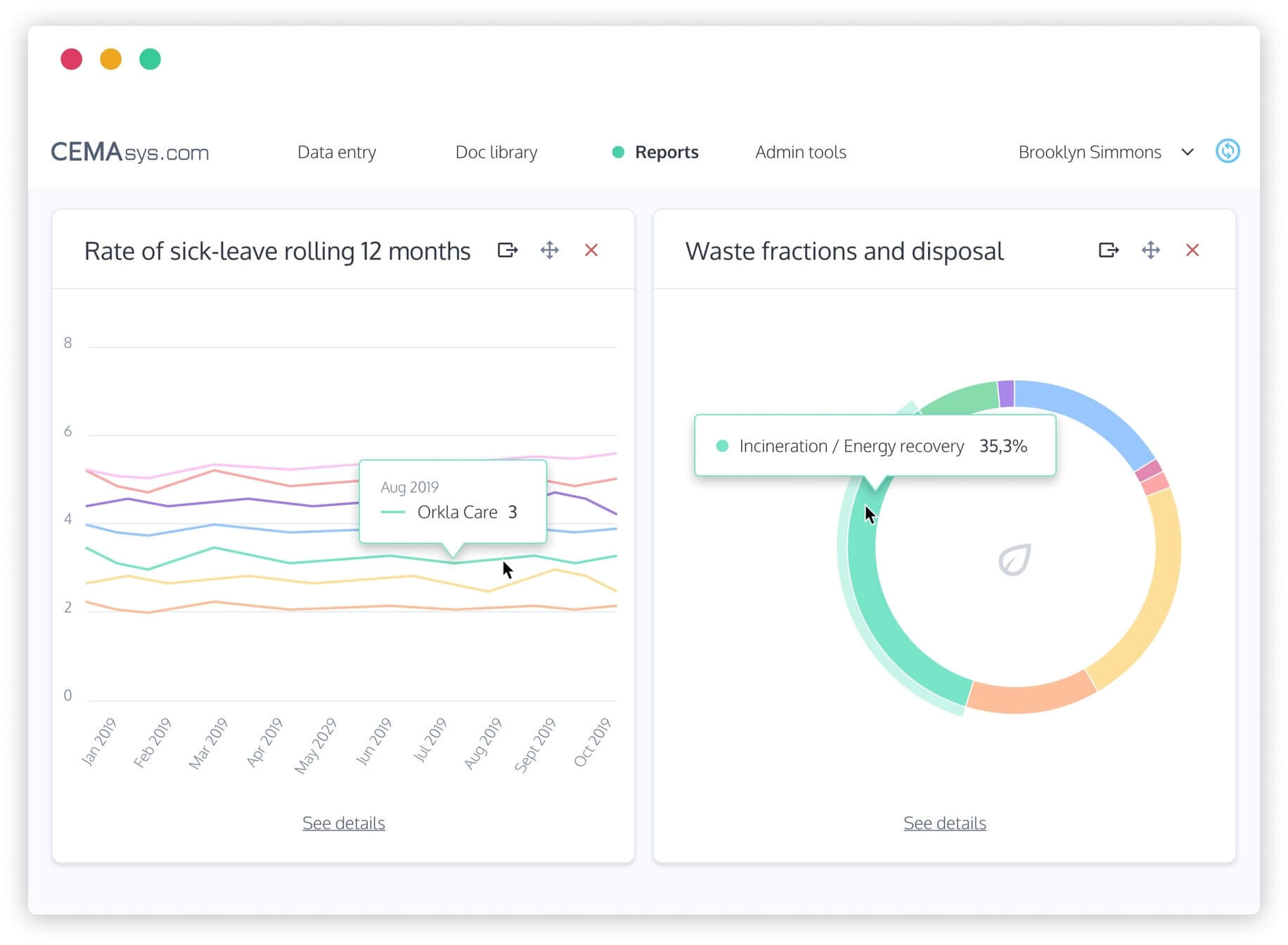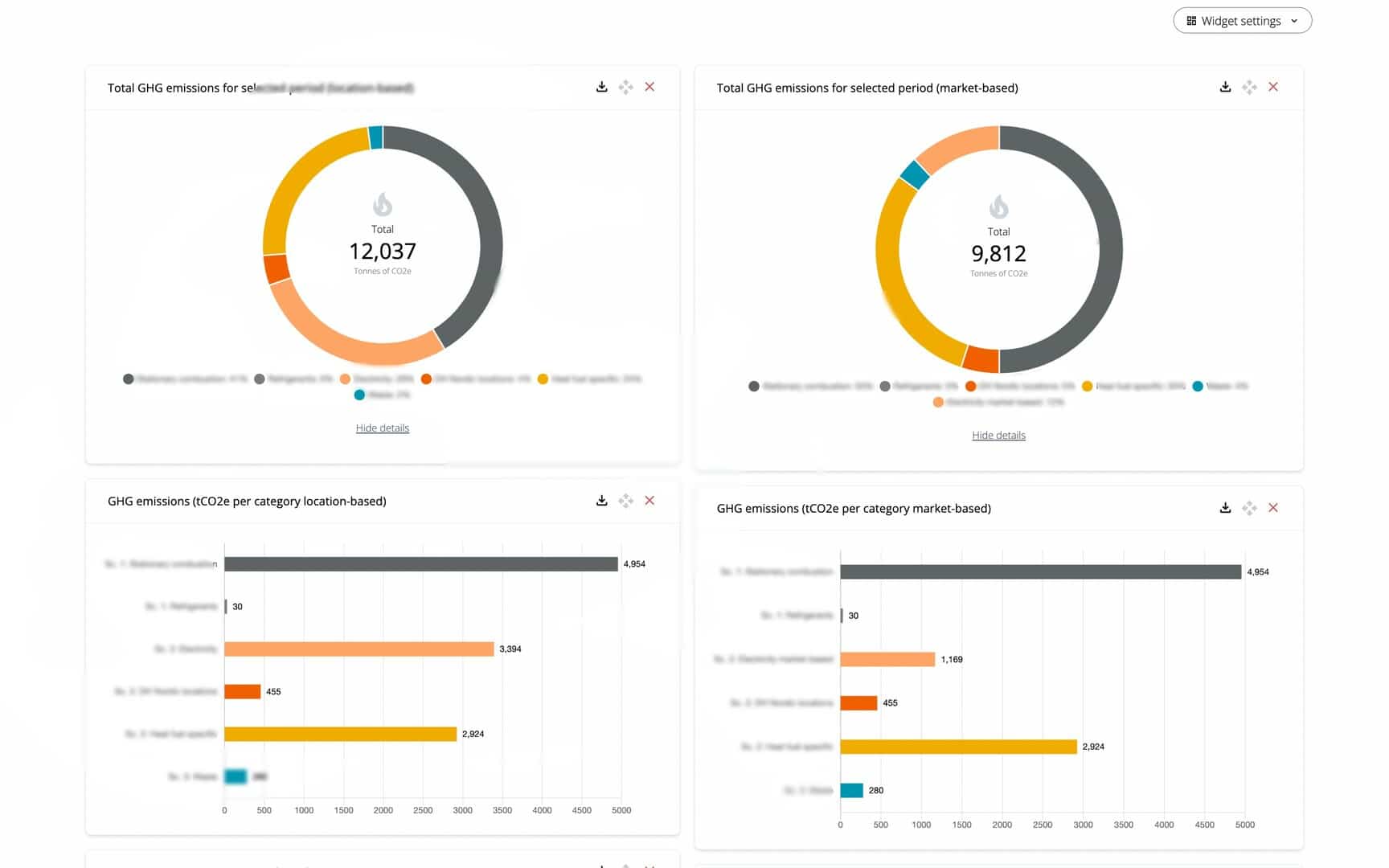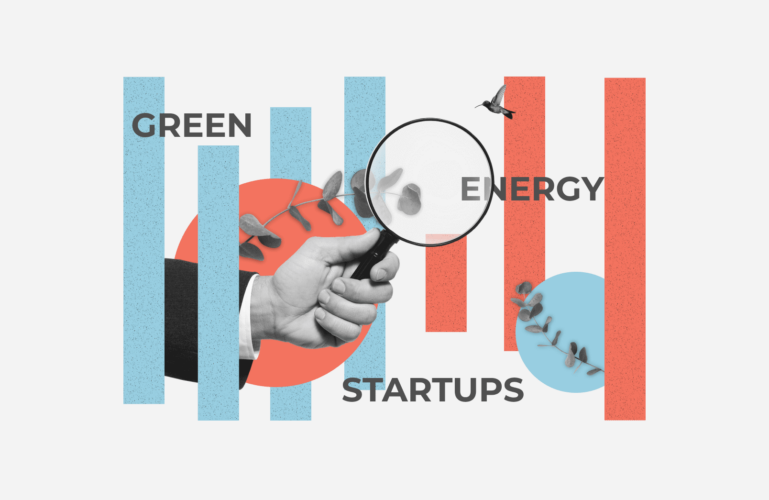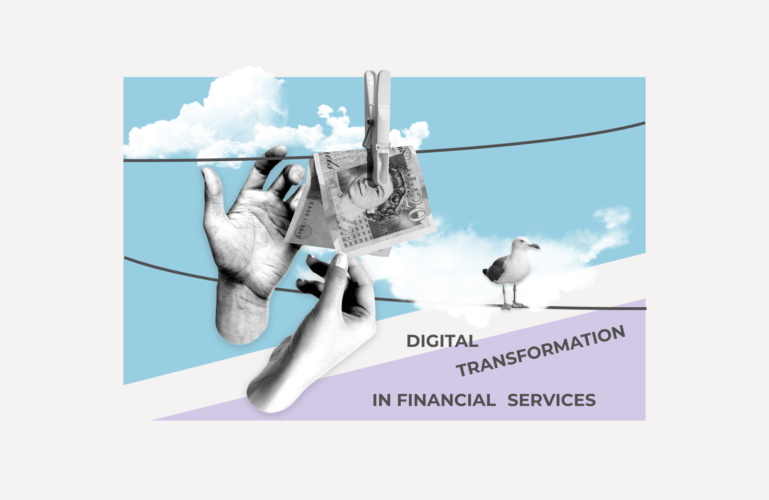The climate crisis presents one of the biggest challenges in our history. As countries all over the world are taking actionable steps towards carbon neutrality, we see lots of opportunities for businesses to step up their game. Investment in sustainability opens up a huge playing field for all kinds of startups, both digital and traditional.
The energy management solutions market, in particular, is predicted to reach $161.9 billion by 2030, growing at an amazing CAGR of 16.2%. As a software development company, MindK helped in building several energy management and sustainability systems. Today, we’ll detail the main kinds of software in this sector and explain how they work as energy management technologies.
Tale of contents:
- What are energy management solutions?
- Why is there a need for energy management solutions?
- Types of energy management solutions and how they work
- Classical energy management systems (EMS)
- Sustainability reporting software
- Renewable energy monitoring software
What are energy management solutions?
Energy management solutions are software products that allow businesses to:
- Monitor energy and heat consumption in real-time, often down to specific equipment and facilities.
- Create analytics based on energy consumption, make predictions, and devise energy-saving strategies.
- Take automated actions to cut energy usage.
- Generate reports for compliance and ESG purposes.
- Manage on-site energy generation, storage, and electric vehicle (EV) charging.
These solutions have a variety of features that fall under three broad categories:
Monitoring. You can’t improve what you can’t measure. So real-time monitoring is the number one thing for any energy management software. You can gather readings from a variety of sources – utility meters, IoT devices, weather stations, and various sensors. Software can use advanced analytical features to build accurate trends for power consumption, emissions, expenses, and other factors. Companies can use this information as a benchmark for any energy-saving and sustainable initiatives in the future. Informing people about their energy usage can even lower costs by 7%
Engaging. When software monitors energy usage in real-time, it can send notifications about spikes in consumption or other anomalies. It can then take manual or automated actions to lower energy consumption. A system that’s connected to a larger grid can help cut down energy spending by dimming lights during off-hours or help businesses save and distribute surplus energy. Software can then provide instant feedback on how these actions affect energy usage and costs.
Reporting. Analytics help users visualize interactions between different factors that affect energy usage. This can help with the development of energy efficiency strategies and gauge their effectiveness. Collecting data for compliance and ESG reporting is one of the key functions of industrial energy management software. In such cases, software can save hundreds of hours on filing reports and calculating complex formulas that identify the company’s environmental impact.

Why is there a need for energy management solutions?
There are several reasons why there’s a large trend of businesses looking toward energy-saving technologies.
The first reason is the large-scale digitalization of the manufacturing sector. Cloud processing, artificial intelligence (AI), and Internet of Things (IoT) allow the remote control of energy usage, heating, ventilation, and air conditioning (HVAC) across the whole facility. According to Deloitte, ⅘ of industrial leaders are looking forward to using smart factory tech to optimize energy consumption and cut overheads.
Mass digitalization goes hand in hand with the electrification of transport, heating, and industrial equipment. Prices for batteries, solar panels, and other Distributed Energy Resources (DER) are rapidly going down, making them a more cost-efficient option for businesses. Yet, managing these resources at scale requires digital software.
Another incentive comes from government initiatives. The European Green Deal is an ambitious plan to reach carbon neutrality by 2050. To achieve this, the EU plans to invest around €1 trillion over the next decade into:
- Renewables and energy efficiency.
- Full digitalization of the energy market.
- Decarbonization of energy-intensive industries.
- Reducing pollution and industrial waste.
- Housing renovation, and so on.
The US followed Europe’s lead with the Build Back Better Act, which allocates $555B to promote green energy and sustainability.
Rising energy costs are another big factor. According to Deloitte, almost half of the industrial leaders cite cost reductions as the main reason for implementing energy management initiatives. The surge in demand, coupled with a drop in oil production caused bills to go up by almost 200% in many developed countries. The invasion of Ukraine also threatens to undermine market stability. Many countries started boycotting Russia, so the latter began using gas export reduction as their main justification and as a manipulative tool, which led to gas prices being as much as 6x times higher than in Q1 2021. Many European countries are now drafting plans to decrease their reliance on Russian gas, coal, and oil. Energy efficiency and sustainability will play a huge role in this process.
Source: Wikipedia, Deloitte
Last but not least, investors are now increasingly looking for eco-conscious businesses. To help such investors, financial services now take into account the company’s environmental, social, and governance (ESG) indicators like energy consumption, emissions, and animal welfare. Bloomberg Intelligence now predicts ESG assets hitting $50 trillion by 2025!
Together, all the factors mentioned create a large market demand for software that can manage energy usage, improve sustainability, simplify compliance, and save money across the board.
Now, let’s examine the main features you need to have when building energy management software of any type.
Types of energy management solutions and how they work
Classical energy management systems (EMS)
Examples: Wattics, Aquicore, Gridpoint.
This type of solution helps measure a company’s energy usage. Newer applications can analyze the power consumption of specific equipment, make accurate projections of energy-saving measures, or even monitor heating, gas, and water consumption.
For example, one of our clients provides energy audits, management, and monitoring for more than 30 energy-saving projects. We helped them build a SaaS energy management project that takes data from heating meters, accounts for weather forecasts, and dozens of house characteristics to predict optimal energy consumption. Here’s how these systems work.
Energy consumption forecast, a feature that saves $600,000 a year in one region alone [request a case study]
- Data collection
The simplest approach is manual data collection. The system we developed was originally designed to monitor energy consumption in state-owned buildings across the country. For this purpose, the app had multiple user levels – state admins, regional admins, building admins, and so on. The latter would check all kinds of utility meters and fill the readings in a web form. The system would then consolidate data from different sources to build analytics.
Our client later decided to automate this process by taking readings directly from smart sensors. We also took weather forecasts from the Dark Sky Application Programming Interface (API) to predict optimal power consumption.
- Data storage
An EMS can keep all data on a dedicated server or use cloud-based storage. Relational databases like PostgreSQL are great for performance in calculation-heavy apps like EMS. Such applications can also be connected to Enterprise Resource Planning and accounting systems to document energy-saving initiatives.
- Data analytics & reporting
Data visualization is one of the central features of any EMS. For instance, the EMS we’ve built can track daily/monthly/yearly energy consumption at the building, regional, and state levels. All calculations are based on state standards for optimizing energy consumption. The system combines data from sensors and weather forecasts to build graphs that visualize energy usage and predictions.
Most EMS contain advanced reporting capabilities. You can often compare different loads, energy consumption by equipment type, time period, facilities, and so on. Users can find consumption peaks and generate detailed breakdowns of precisely where and how their business incurs energy expenses.
- Energy-optimization actions
The main goal of EMS is to help companies reduce energy consumption. They can either provide analytics for decision-makers or empower direct actions like load shedding. The latter is used to reduce the so-called peak charges – the payment incurred on businesses, depending on the highest spike in power usage in a given month. Often, peak charges can take over ½ of the company’s electricity bill. So the smoother your power consumption – the less you pay in the end.
EMS can notify operators of incoming peaks or even take automated measures like powering down air conditioners, dimming the lights, or using on-site power sources to smooth out consumption. Such applications will typically allow you to modify load shedding thresholds or automatically lift these restrictions if the facility requires more power.
- Notifications and alerts
Most EMS can send users customizable alerts – push notifications or emails that signal spikes in consumption, equipment failures, high loads outside of running hours, and so on.
Sustainability reporting software
Examples: Envizi, Accuvio, Quentic.
Companies now have to provide extensive reports for regulators and stakeholders. Sustainability reporting software saves hundreds of hours on gathering the required data and making the calculations. To explain how such systems work, let’s take the case of CEMAsys, a sustainability reporting tool developed by MindK, which is now used by more than 250 major corporations across the world.
- Carbon footprint module
Reporting emissions is the main purpose behind sustainability reporting software. Greenhouse Gas (GHG) Protocol provides the scientific foundation for various emission factors that need to be accounted for.
Self-assessment surveys are the most common tool for sustainability reporting. For this purpose, CEMAsys includes a ton of customizable survey templates. Simply select the emission factors that are relevant to your company, save the form, and reuse it later.
As emission reporting is done by different departments, there should be an ability to automatically send the report forms by email. Our application allows people to fill in all the relevant information without logging into the system.
The information is then captured and added to a common database. When developing CEMAsys, we used an open-source relational database called PostgreSQL. It supports a huge number of formulas, data types, properties, relations between tables, and multiprocessing, which all improve performance in calculation-heavy apps.
The gathered data is used for data analytics and visualization. Users may choose relevant information from the past and visualize the effect of various factors on long-term sustainability. For easier understanding, this type of software should feature lots of customizable charts and graphs.
We built the analytical functionality from the ground up, using a modern web framework called Nest.js. Alternatively, you can create powerful analytics using readymade data visualization tools like Microsoft Power BI. Since many of CEMAsys clients use Power BI, we’re actively working to integrate it with our system.
Reporting is the last feature you need in such a module. Companies should be able to view annual/semi-annual/quarterly/monthly reports and export them in various formats (XLS, PDF, and so on).
CEMAsys analytics dashboard [explore the case study]
- ESG compliance module
ESG indicators are increasingly important for investors that care about the environment and people. To address this demand, many financial companies now use ESG indicators to help investors find opportunities to put their money to good use.
An ESG module typically includes a variety of customizable surveys for the most important indicators like energy consumption, CO2 and harmful emissions, animal welfare, compliance with regulations, and so on. Such a module also transforms the myriad of financial data into greenhouse gas equivalents to calculate the company’s ESG scores and visualize them on a dashboard. The formulas can be based on widely-accepted reporting requirements like Global Reporting Initiative (GRI), UN Global Compact, and environmental management systems (ISO-14001 & EMAS).
- Activity log module
Our system allows companies to plan their actions for improving ESG indicators. Employees can use an activity log module to add information about the required purchases, pending repairs, or to request materials needed for the following month.
Each enterprise has a unique hierarchy, so customizable access levels with the ability to add companies, departments, and sub-departments in different countries are necessary. Surveys should automatically save with the necessary permissions in secure cloud storage for easy sharing with colleagues.
Importing huge amounts of data from other systems is another useful feature. Using the CEMAsys API, we can access data from third-party ERP systems (SAP, Oracle, Microsoft, Visma), procurement software, factory networks, onsite sensors, and automatically turn it into CO2 equivalents.
- Supply chain module
Calculating your emissions is hard enough, but the biggest challenge for most businesses is estimating the impact to all your suppliers. This is known as Scope 3 emissions.
A supply chain module should include copious surveys for your partners to compile without having to log into the system. These surveys can address everything from emission factors to employee sickness per month, the amount of money spent on repairs, and so on.
Data is then captured and translated into ESG indicators. Supply chain reporting allows you to monitor partner compliance, view their ESG risk scores, and create corrective action plans.
- EU Taxonomy module
As we’ve mentioned, the EU aims to invest €1 trillion in sustainable business by 2030. EU Taxonomy for sustainable activities is a new classification that defines which investments can be considered sustainable. Starting from January 2022, all large enterprises are obliged to report their Taxonomy alignment.
To support the EU Taxonomy reporting, CEMAsys uses the same legal company structure and self-assessment tools as in ESG reporting. The data is added to a common database, processed with algorithms, and visualized on a graphical dashboard.
EU Taxonomy module in CEMAsys energy and ESG compliance management software by MindK
Renewable energy monitoring software
Examples: Harksys, Kevala, Stem, Qosenerg.
Green energy management solutions are similar to traditional EMS with a larger focus on renewables. That’s why this type of software can combine some of the previously described energy monitoring and reporting features. They assist companies to track the usage of on-site solar panels, wind turbines, and alternative fuel generators, get real-time emission data and even trade green energy with the larger grid. Such software typically provides precise information on the forms of renewable energy utilized, such as Energy Attribute Certificates (EACs or GOs, REC, REGOs, etc. ), PPAs, or green supply tariffs.
Here are the additional features you can include in renewable energy monitoring software.
- Managing green energy generation and battery storage
Renewables require careful balancing of generation, battery storage, and timely release of the stored energy to cut the peak charges. Software can help enterprises to start this process by analyzing their peak loads, which is much more important for green energy sources whose output varies greatly during the day. The next step is managing the timely generation, storage, and release of green energy with the help of a digital system.
Source: 2021 Deloitte Industrial Grid Interaction Survey
- Flexible load programs and demand response (DR)
In many regions, utility providers pay consumers to decrease their electricity usage during peak hours (known as demand response). The system gets a notification from the grid owner promoting an automated or manual response (for example, powering down some of the equipment or switching off the lights). The provider then tracks the amount of energy saved and pays compensation.
Taking part in DR initiatives is challenging for companies that find it difficult to adjust their power consumption in real-time. Energy management software can help them automate this process. As DR programs tend to change rapidly, digital systems will allow companies to dynamically react to any changes in tariffs and market incentives.
- Electric fleet and charging optimization
Many large warehouses, production companies, and other industrial enterprises start opting for electric vehicles (EV) to save costs. By performing circuit-specific analysis, renewable monitoring software allows selection of the optimal EV charging locations. Its analytical capabilities can pinpoint the most cost-effective time to store renewable energy and charge the vehicles. At the same time, reporting features allow companies to gauge the impact of EV initiatives on their budgets.
Source: 2021 Deloitte Industrial Grid Interaction Survey
- Microgrids and peer-to-peer trading
Many larger facilities like industrial plants, hospitals, or college campuses can have independent grids with local power sources and battery storage. These so-called microgrids can be connected to the larger grid, allowing companies to switch between onsite and external power sources.
Energy monitoring software can help companies maximize value from microgrids. One of the first things they can do is to use company data to evaluate its resilience, determine critical loads and establish the need for backup power. This analysis aids the configuration of onsite power sources like solar panels and set up batteries. The latter can be used to store cheap energy to shave peak charges. Alternatively, companies can automatically sell the energy using various state initiatives or the emerging peer-to-peer trading software.
Source: 2021 Deloitte Industrial Grid Interaction Survey
Conclusion
Businesses have huge incentives to cut energy costs and improve their sustainability. This is often impossible without using Innovative software. That’s why companies are now building various Energy Management Solutions (EMS) to compete for a $162B market.
There’s a great variety of promising ideas for the sustainability sector. The key to success is having enough expertise and the right talent necessary to implement the necessary technology. MindK has over 10 years of experience in building applications for the sustainability sector. Our engineers, aided by highly qualified business analysts and project managers, have completed more than 170 projects for our global partners. So if you need any help with realizing your idea, you can simply fill out the contact form to arrange a free consultation with our experts.
